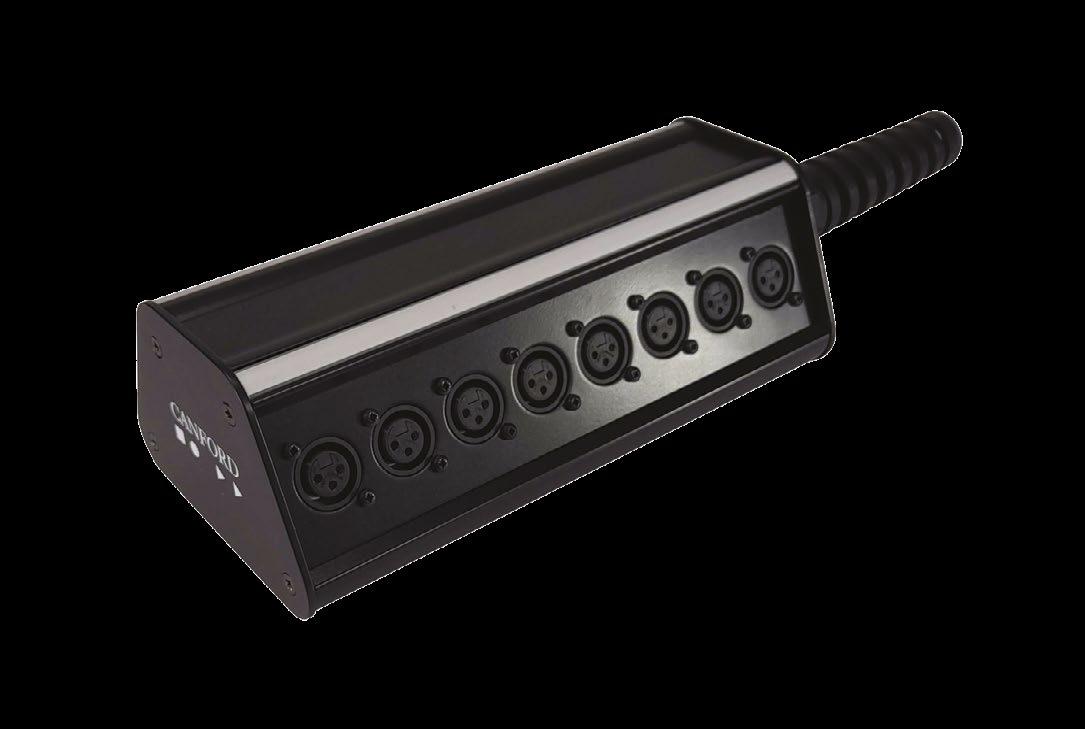KNOWING YOUR NODES The discussion continues… My articles from Source Material editions: 3, 4 and 6 reviewed transport mediums assuming an unmanaged network flow, but what about the nodes?!
By Charles Phelps, Canford Technical Support Engineer With transceiver distances dependant on the products we wish to use, how do we route this information efficiently? Developing an understanding of IT network workflows is becoming ever more required within the AV and broadcast market. Offering extended performance and multifunction integration over one unified infrastructure provides an appealing update in system design with comparison to more traditional analogue solutions. In order to elaborate on efficiency it is important to first look at the workflow. IT networks typically comprise of multiple processors moving information from one client to another. This can be internal (LAN), such as a Dante stream from Input to output within a given physical space. Or an external (WAN) connection, accessing and interfacing with internet or multisite communication systems. Providing a computable link between two or more networked devices, the most basic network consists of a network Hub which broadcasts data to every Ethernet based device connected. Trading this hub for a Switch, data transmission is more specified, establishing isolated links between clients. Where a switch utilises Media access control (MAC) addresses a Router introduces Internet Protocol (IP) Addresses, becoming the intermediator for connectivity of multiple local area networks (LAN) creating the start of a wider area network (WAN) otherwise known as the internet. From there it is just a game of interoperability and functionality; Connecting two dissimilar networks? You need a Gateway to convert data from one protocol or format to another. Want to provide centralised resources? Servers provided storage, processing and data exchanges where human intervention is not required. Want to add connectivity for mobile devices? An Access Point provides a bridge between wired and wireless connections. Want to protect against unauthorised access? A Firewall monitors and restricts network traffic into and out of the network. Don’t have a broadband connection? A Modem interfaces a WAN via a traditional telephone line. Although the network
32 | Source Material by Canford
topology in a domestic setting is typically compiled into one device, it is clearer to treat its processes as individual components such as can be seen in many large commercial IT networks.
Digging below the physical, in the digital domain data presents as a 1 or a 0, a transistor on or off. Multiple logic states compile to convey information and packaged into the form of a datagram. Each datagram is then placed into a packet then each packet is further placed into a frame, with most signals from source to destination consisting of multiple transmissions. For this encapsulation and transmission there are a range of transport protocols for wrapping and addressing varying in their size and quality of service (QOS).To highlight a few in simple terms; UDP (faster but susceptible to loss) and TCP (slower but can retransmit loss) are both communications protocols used to exchange data between networked devices. TCP based network protocols include: FTP/S (establishes data as well as control connection “/secure”), HTTP/S (establishes data connection only “/secure”) and SMTP (server side mail exchange and relay). UDP based network protocols include: NTP (synchronisation of clock times), DNS (network address lookup resource) and DHCP (automatic IP assignment). The bandwidth of any given network is reliant on limitations of throughput, error rate and QOS from nodes as well as propagation, interference and stability of the interconnecting transport medium. It would be agreeable to suggest bottlenecks are a regular, unavoidable occurrence for most networks. A sudden rush in traffic between two nodes exceeding the potential maximum processing limit, often results in delayed, interrupted, or complete loss in data
Call UK sales on +44(0)191 418 1122 or email sales@canford.co.uk






























